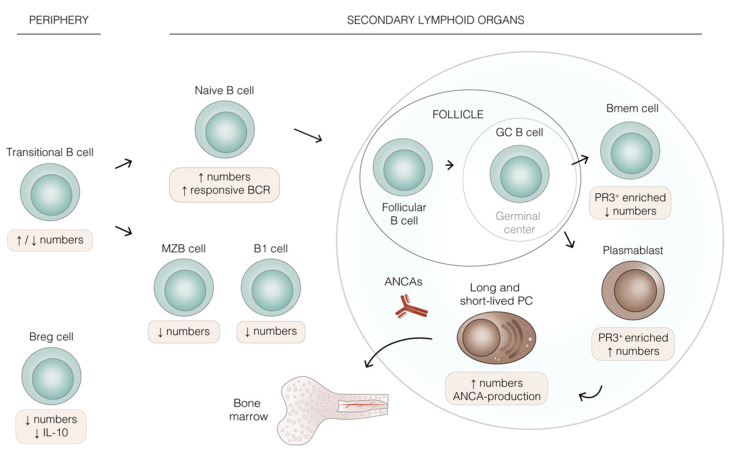Figure 1.
B cell lineage development and altered B cell populations in ANCA-associated vasculitis (AAV). Schematic representation of human B lineage cell differentiation. Beige boxes highlight the effects of AAV on the indicated cell populations. The extra-follicular pathway of B cell differentiation is not shown for simplicity. Transitional B cells migrate into secondary lymphoid organs, where they differentiate into innate-like B1, marginal zone B (MZB) cells, or naive B cells. Naive B cells enter lymph nodes and become follicular B cells, and it is within the follicle that a T-cell dependent response triggers the formation of germinal centers (GCs). During the GC reaction, the GC B cell may generate memory B cells (Bmem), plasmablasts, or plasma cells (PCs), which reduce the pathogenic anti-neutrophil cytoplasmic antibodies (ANCAs). PCs may be short- or long-lived and home to the bone marrow, whereas Bmem egress into the periphery. B regulatory cells (Breg) may arise from almost all B cell lineage populations. All the aforementioned B cell populations have been found to be dysregulated in AAV, being increased or decreased, as shown by the arrows in the beige boxes. Abbreviations: PR3 (proteinase 3), BCR (B cell receptor).

